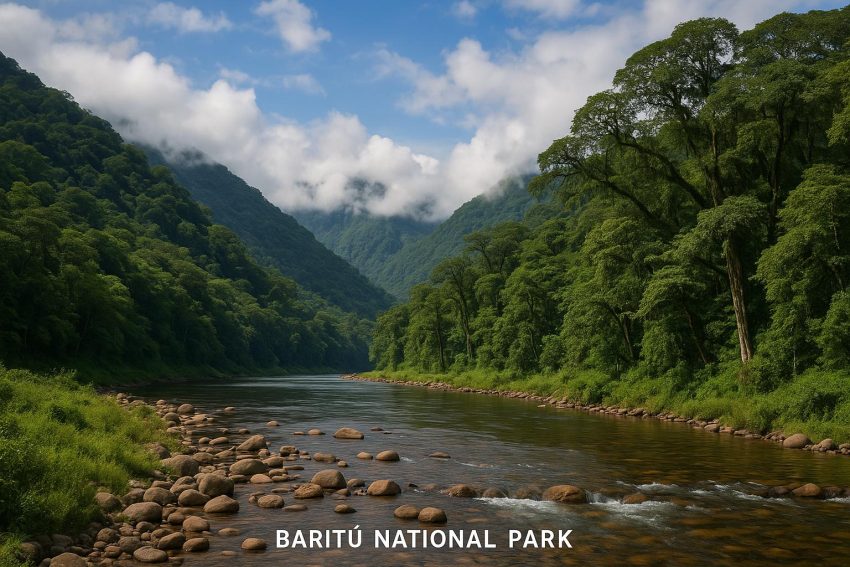Overview of Baritú National Park
Baritú National Park, a remarkable protected area, is situated in the Salta Province of northwestern Argentina. Established in 1974, this park is renowned for its rich biodiversity and remote, undeveloped terrains, providing a unique and pristine natural environment. Spanning approximately 720 square kilometers, it forms part of the Southern Andean Yungas ecoregion, which is characterized by lush subtropical forests. Despite its ecological significance and natural beauty, Baritú is one of Argentina’s least accessible national parks, making it a haven for those seeking an untouched natural experience.
Geography and Climate
The park is uniquely positioned in a mountainous region, with altitudes ranging from 400 to 2000 meters above sea level. This variation in elevation creates a wide array of habitats, extending from tropical forests at the lower levels to serene cloud forests at higher elevations. The climate in this region is generally humid, yet it experiences a distinct dry season. This climatic condition allows a diverse range of flora and fauna to flourish, contributing to the region’s overall ecological diversity.
Flora
Baritú National Park is home to an extensive variety of plant species, courtesy of its diverse climatic and altitudinal range. Within the park, visitors can find dense forests comprising cedar, coca, and lapacho trees, among other notable species. Additionally, the park supports an array of ferns, orchids, and various epiphytes typical of the Yungas ecosystem. These plant species play a crucial role in maintaining the ecological balance and offering habitat and nourishment for various animal species within the park.
Fauna
The fauna of Baritú National Park is as diverse as its flora, with several species that are endemic to the region. A prominent feature of the park is its population of large mammals, including the majestic jaguar, the elusive spectacled bear, and the peaceful tapir. In addition to these large mammals, the park boasts a wide variety of smaller mammals, reptiles, and numerous bird species, such as the colorful toucanets and the majestic eagles. The presence of endangered species enhances the park’s significance as a crucial area for conservation, emphasizing the need for ongoing and effective preservation efforts.
Accessibility and Tourism
Access to Baritú National Park remains limited, a factor that contributes to its allure for those seeking solitude and a truly pristine natural landscape. The closest town to the park is San Ramón de la Nueva Orán, from which intrepid travelers can embark on their journey to explore the park’s remote terrain. However, the roads leading to the park can be challenging, especially during the rainy season, necessitating the use of suitable vehicles and adequate preparation for the journey. This limited accessibility ensures that the park remains a secluded haven, preserving its natural state and minimizing human impact.
Conservation Efforts
Conservation efforts within Baritú National Park are centered on preserving the unique ecosystems and the native species that inhabit them. The park is managed by Argentina’s National Parks Administration, which implements various measures to control human impact and address illegal activities such as logging and poaching. These efforts are crucial in maintaining the ecological integrity of the park and ensuring the protection of its diverse array of flora and fauna. Continuous monitoring and research are essential to adapt conservation strategies to emerging challenges and to enhance the park’s natural resilience.
For more detailed information on visiting Baritú National Park, including comprehensive travel tips and regulations, prospective visitors are encouraged to consult with official resources or reach out to local tourism agencies. Such resources provide valuable insights to help visitors plan their trip, ensuring an enriching and responsible experience while exploring this exceptional natural sanctuary.

